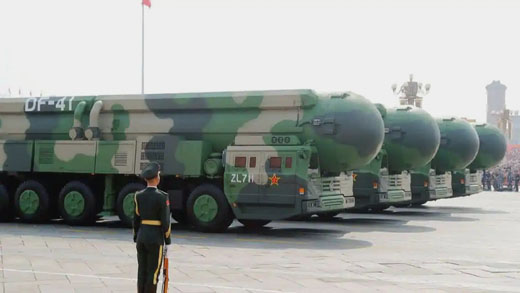FPI / July 1, 2020
Commentary by Jason Orestes
Conventional analysis of the world’s militaries always places the U.S. at the top, and by a wide margin.
The most common measure is defense spending, a metric by which the U.S. is so far and away number one it looks like it’s not even a contest. The U.S. spends $750 billion per year on defense. Second is China at $237 billion, and it drops off dramatically from there (Russia is 8th at $48 billion). The defense expenditure of every other country COMBINED in the top 10 isn’t even close to what the U.S. alone spends on its military ($653.2 billion).

However this metric is deceptive, and provides a false sense of American superiority. Not of our abilities, but in understanding the actual capacity of our adversaries, namely Russia and China.
Comparing defense capabilities of countries with different currencies and economic abilities is a more complicated task than simply converting their accounting to U.S. dollars and then seeing whose is biggest (you’ll note all those figures are in U.S. dollars). Russia is often viewed as a non-serious threat due to defense spending that’s more along the lines of South Korea ($44 billion) or France ($41.5). However a reasonable observation of Russia’s million-man military and formidable military resources exposes how specious this framing is.
Russia’s weapons procurement is U.S.-like in that it exceeds most European powers combined. Its military is on the bleeding edge of technological capabilities with its hypersonic weaponry and missile defense systems. South Korea is nominally spending about as much as Russia, but doesn’t come anywhere near these kinds of faculties. You don’t need to be a geopolitical warfare strategist to understand that Russian nuclear and conventional forces are vastly superior to those of Germany or the UK, both of which purportedly spend more. Clearly Russia must be able get more for its money than its nominal budget would suggest.
Market exchange rates are an inferior way to gauge military capacity. Analysis that uses what’s called purchasing power parity (PPP) is a much more insightful way to glean what is being spent relative to how much that money actually buys in a given country. E.g. $10k in New York is much different than $10k in St. Petersburg. If things cost half as much in one place, your $10k spent effectively bought twice as much even though it would still only show up as $10k spent in both cities.
This is the crux of the issue. Market exchange rates that just convert a country’s defense budget to U.S.D equivalent and then pretend it’s apples-to-apples as to what those dollars actually buy doesn’t provide an understanding of how much military might the country is able to wield for each unit of currency.
These headline U.S.D defense figures woefully underestimate the real wherewithal of China and Russia. Adjusted for PPP, Russia’s military expenditure is projected to be between $180 – $200B. This means that comforting 15:1 ratio the U.S. thinks it has over Russia is really less than 4:1.
And China? It’s weaponry is exceptionally advanced, entailing hypersonic, anti-satellite, and anti-carrier abilities. Beijing’s high-altitude electromagnetic pulse (HEMP) weapons could theoretically take out the U.S. electric grid, which would be something of more lethal 21st century Pearl Harbor. This sort of asymmetric warfare is something that doesn’t quite show up in the defense spending balance sheet.
Adjusting China’s military resources for PPP yields defense spending that’s 87% that of the U.S., or roughly $652.5B in PPP dollars, just $100B shy of the U.S.. This may even be a conservative estimate, as China does not include research and development in its accounting of military budgets.
What’s most disconcerting is when you combine the PPP military spend of Russia and China, it produces a figure of about $850B, more than the U.S.’s resources spent per year. So much for that “more than all other countries in the top 10 combined” talk.
The U.S. is still the world’s premier economic and military hegemony. The metrics and realities shared in this article are ones our armed forces and the Pentagon are well aware of, which is precisely why we continue to budget so much on defense despite appearing to be overwhelmingly ahead. Our military, ally networks, and technology is still the envy of the globe. But beware resting on those laurels in the face of adversaries that aren’t nearly as far behind as we’d like to think.
Jason Orestes (@market_noises) is a former Wall Street financial analyst who focuses on contemporary political developments affecting economics, markets, and culture. His commentary can be found on Washington Examiner, TheStreet, MSN Money, RealClearMarkets, and RealClearPolitics.
FPI, Free Press International
